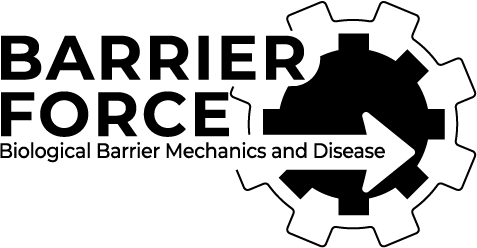Publications
Highlighted publications from CoE
-
The GET insertase exhibits conformational plasticity and induces membrane thinning
The eukaryotic guided entry of tail-anchored proteins (GET) pathway mediates the biogenesis of tail-anchored (TA) membrane proteins at the endoplasmic reticulum. In the cytosol, the Get3 chaperone captures the TA protein substrate and delivers it to the Get1/Get2 membrane protein complex (GET insertase), which then inserts the substrate via a membrane-embedded hydrophilic groove. Here, we…
-
Zika virus prM protein contains cholesterol binding motifs required for virus entry and assembly
For successful infection of host cells and virion production, enveloped viruses, including Zika virus (ZIKV), extensively rely on cellular lipids. However, how virus protein-lipid interactions contribute to the viral life cycle remains unclear. Here, we employ a chemo-proteomics approach with a bifunctional cholesterol probe and show that cholesterol is closely associated with the ZIKV structural…
-
In Vitro and In Silico Studies of Functionalized Polyurethane Surfaces toward Understanding Biologically Relevant Interactions
The solid-aqueous boundary formed upon biomaterial implantation provides a playground for most biochemical reactions and physiological processes involved in implant-host interactions. Therefore, for biomaterial development, optimization, and application, it is essential to understand the biomaterial-water interface in depth. In this study, oxygen plasma-functionalized polyurethane surfaces that can be successfully utilized in contact with the tissue…
-
The extracellular matrix dictates regional competence for tumour initiation
The skin epidermis is constantly renewed throughout life1,2. Disruption of the balance between renewal and differentiation can lead to uncontrolled growth and tumour initiation3. However, the ways in which oncogenic mutations affect the balance between renewal and differentiation and lead to clonal expansion, cell competition, tissue colonization and tumour development are unknown. Here, through multidisciplinary…
-
The possible dual role of Ang-2 in the prognosis of pancreatic cancer
Pancreatic ductal adenocarcinoma (PDAC) features a dense desmoplastic stroma, which raises the intratumoral interstitial pressure leading to vascular collapse and hypoxia, inducing angiogenesis. Vascular growth factors, such as vascular endothelial growth factor (VEGF) and angiopoietin-2 (Ang-2), increase in PDAC. A high VEGF and a high circulating Ang-2 associate with shorter survival in PDAC. In addition…
-
Defined extracellular matrix compositions support stiffness-insensitive cell spreading and adhesion signaling
Integrin-dependent adhesion to the extracellular matrix (ECM) mediates mechanosensing and signaling in response to altered microenvironmental conditions. In order to provide tissue- and organ-specific cues, the ECM is composed of many different proteins that temper the mechanical properties and provide the necessary structural diversity. Despite most human tissues being soft, the prevailing view from predominantly…
-
Activated I-BAR IRSp53 clustering controls theformation of VASP-actin–based membraneprotrusions
Filopodia are actin-rich membrane protrusions essential for cell morphogenesis, motility, and cancer invasion. How cells control filopodium initiation on the plasma membrane remains elusive. We performed experiments in cellulo, in vitro, and in silico to unravel the mechanism of filopodium initiation driven by the membrane curvature sensor IRSp53 (insulin receptor substrate protein of 53 kDa).…
-
IGFBP2 secretion by mammary adipocytes limits breast cancer invasion
The progression of noninvasive ductal carcinoma in situ to invasive ductal carcinoma for patients with breast cancer results in a significantly poorer prognosis and is the precursor to metastatic disease. In this work, we have identified insulin-like growth factor-binding protein 2 (IGFBP2) as a potent adipocrine factor secreted by healthy breast adipocytes that acts as…
-
Psychedelics promote plasticity by directlybinding to BDNF receptor TrkB
Psychedelics produce fast and persistent antidepressant effects and induce neuroplasticity resembling the effects of clinically approved antidepressants. We recently reported that pharmacologically diverse antidepressants, including fluoxetine and ketamine, act by binding to TrkB, the receptor for BDNF. Here we show that lysergic acid diethylamide (LSD) and psilocin directly bind to TrkB with affinities 1,000-fold higher…
